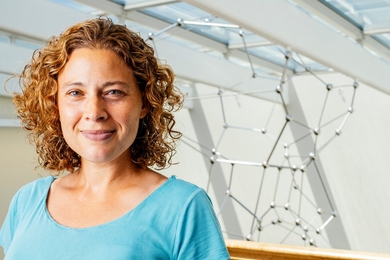South Africa’s export-driven economy is highly dependent on good road and air transportation, so the country’s government recently sent 30 fast-rising transport managers, mostly in their 30s and 40s, to MIT for a specially developed five-day professional education program.
What was also special about these managers was that most of them had grown up in disadvantaged communities with limited educational, social, and employment opportunities under the apartheid era. They brought with them a passion for learning and an infectious collegial spirit, and they became an inspiration for their MIT Professional Education faculty, making the summer week in Cambridge a transformative experience for all involved.
Professor Joel Schindall, director of the MIT Engineering Leadership Program, and Blade Kotelly, lecturer in the same program, taught several sessions on design thinking and innovation. “This group, more than any I’ve worked with, was so open, so excited,” said Kotelly. “They had such a strong desire to learn, and to modify the way their organizations operate, and they were very quick to realize that you can innovate on any level, even the smallest thing, and make a difference.”
After a day of classroom work on design principles, Kotelly gave the students MBTA subway passes, and sent them on an evening photo scavenger hunt. “I asked them to find examples of good and bad design — door handles, turnstiles, street signs,” he says. “They took photos and shared them via Twitter; the next morning we went through and talked about what made them good or bad in various contexts.”
“That exercise gave our students the opportunity to immediately engage with the excellent transportation system in Cambridge in absolute safety and security,” notes Hazel Bagley, strategic business development manager at the Regenesys Business School in Johannesburg, which oversees the educational program on behalf of South Africa’s Transport Education and Training Authority. “That alone led to new insights; consciously scanning your surroundings gives a completely fresh perspective.”
Student Sibongili Magagula, a senior logistics controller, commented on how Boston and Cambridge have put “so much effort into encouraging walking and cycling, and catering to old and disabled people. Adapting some of these features will help solve some of the challenges we face in South Africa.”
Classmate Virginiah Hlungwani, who works as an operations and technical assistant, said the program experience “has added a value in my life, it expanded my knowledge and taught me to handle challenges in any environment. After the course I felt in my spirit that I have gained self-confidence.”
Professor Schindall, commenting on his experience, said, “From the moment I walked into the classroom and met the students, the program was inspiring. The students were engaged, active, participative, thoughtful, and wonderfully supportive of each other. If I had to pick a single word, I would say they were a delight to work with.”
The program’s content, which also included operations management, was developed over an eight-month period by Tish Miller, MIT Professional Education’s director of academic programs, in consultation with Bagley. Together they ensured that the material would have immediate and lasting value for the students, who were selected on criteria including managerial experience (3-5 years), employment in operations or supply chain management, and identification as strong candidates for senior management roles in the near future.
“I’ve worked on many programs at MIT over the years,” says Miller. “What made this collaboration stand out was the level of gratitude both the participants and the faculty had for each other. Both groups shared how much they were learning from each other and appreciated working together. It made for a very fulfilling experience for all.”
The program, MIT Professional Education’s first with South Africa, came about as a result of the unit’s strategic objective of creating greater engagement with professionals from the world’s major emerging economies. Executive director Bhaskar Pant, who was himself born in one of South Africa’s neighboring countries, Zambia, noted, “There is hunger in rapidly developing economies for the kind of expertise MIT can provide, and it is so satisfying when you witness such joyful participation and adoption of learning as we saw in this program. We look forward to organizing more such mission-centric endeavors in the future.”
Schindall praised the program’s mission of developing the skills of workers from disadvantaged communities who have demonstrated initiative, leadership skills, and potential in the workforce. “I think it’s well-conceived and hope it will be enormously successful,” he says. While no firm plans are in place yet, Regenesys and MIT Professional Education are in discussions about additional offerings down the road.
Whitehead Institute Professor Hazel Sive, founding director of the MIT–South Africa program and herself a South African, gave a brief talk at a program reception, and noted how the interaction there exemplified the two-way value of working with practitioners from around the globe. “Making connections between MIT and South African colleagues through this type of exchange is clearly to our mutual benefit,” she said.
A post-program note to Pant, Bagley, and Regenesys director William Vivian offered a summary of the student perspective. “We learned about mind and hand but equally we were encouraged to be ourselves and we were heard,” they wrote. “We were heard when we asked questions, we were heard when we sang and danced. Not once did we experience anything but unconditional acceptance of who we truly are, and that is MIT’s trump card. When you are accepted in this way you … open your mind to accepting ideas and ways of doing things that you might never have thought of before.”












